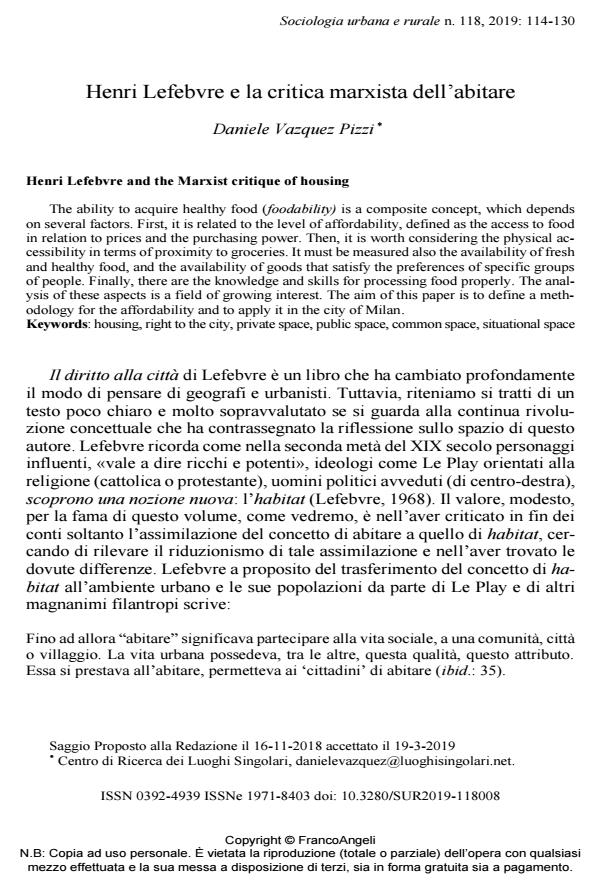Henri Lefebvre and the Marxist critique of housing
Journal title SOCIOLOGIA URBANA E RURALE
Author/s Daniele Vazquez Pizzi
Publishing Year 2019 Issue 2019/118
Language Italian Pages 17 P. 114-130 File size 377 KB
DOI 10.3280/SUR2019-118008
DOI is like a bar code for intellectual property: to have more infomation
click here
Below, you can see the article first page
If you want to buy this article in PDF format, you can do it, following the instructions to buy download credits

FrancoAngeli is member of Publishers International Linking Association, Inc (PILA), a not-for-profit association which run the CrossRef service enabling links to and from online scholarly content.
The ability to acquire healthy food (foodability) is a composite concept, which depends on several factors. First, it is related to the level of affordability, defined as the access to food in relation to prices and the purchasing power. Then, it is worth considering the physical accessi-bility in terms of proximity to groceries. It must be measured also the availability of fresh and healthy food, and the availability of goods that satisfy the preferences of specific groups of people. Finally, there are the knowledge and skills for processing food properly. The analysis of these aspects is a field of growing interest. The aim of this paper is to define a methodology for the affordability and to apply it in the city of Milan.
Keywords: Housing, right to the city, private space, public space, common space, situational space
Daniele Vazquez Pizzi, Henri Lefebvre e la critica marxista dell’abitare in "SOCIOLOGIA URBANA E RURALE" 118/2019, pp 114-130, DOI: 10.3280/SUR2019-118008